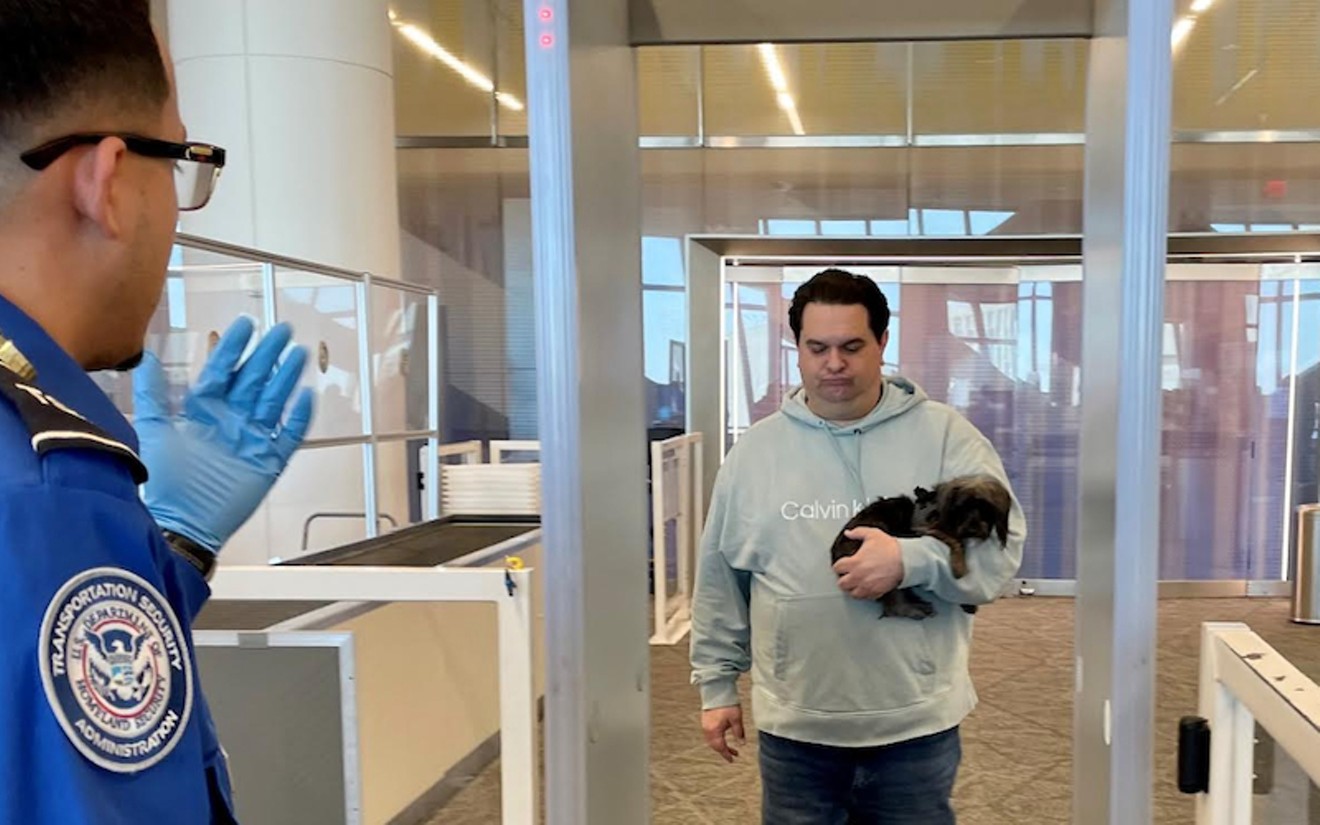“It’s something we are starting to see, travelers get stressed out at security checkpoints and come into the line trying to get their boarding pass and prep everything else at the same pace as everyone around them and they just aren’t paying attention, " said Mark Howell, TSA Southeast regional spokesman.Surprisingly, it’s not the first Chihuahua we’ve seen in a bag! Took some scrolling, but finally found this tweet from our colleague @TSA_Northeast from March 2015: https://t.co/sBXqsMcnf4 https://t.co/GncUm4befJ
— TSA Southeast (@TSA_Southeast) December 7, 2022
Howell said TSA officials have seen it all – including a boa constrictor in Florida, an orange cat in New York, a frog in Pennsylvania and a chihuahua-dachshund mix in Wisconsin.
Fortunately, according to Dr. Roberta Westbrook, Chief Veterinarian and Animal Medical Officer for Houston, if pets are sent through the X-ray machines, they should not be too affected by the radiation levels in these scanners.
“The good news is that even if your pet does go through an X-ray machine, the amount of radiation is not at a dangerous level,” Westbrook said. “The levels of radiation in these machines are very low so they do not cause any lasting effects to your pet.”
Although pets don’t face physical danger from the scan, Westbrook said owners can never anticipate whether animals will react emotionally or mentally and as a result, cause harm to themselves or the equipment.
“You don’t know if your pet is going to have a panic or anxiety attack about being in a tight space and damage the carrier or the X-ray machine itself, so there is a potential danger to your pet in that case and to the airport’s equipment,” Westbrook said.
There haven’t been any reports of animals going through these X-ray machines at any Texas airport, but Howell said these instances are increasing as travelers are returning to the skies after a break during the pandemic.
“January was the first year since before the pandemic that we saw the numbers of this that we did,” Howell said. “There’s definitely kind of an urge to get back out there and travel and that means bringing furry family members along with you, but you have to do your research ahead of time to avoid any mistakes.”
Howell suggested travelers plan as every airport has different protocols for what kinds of animals are allowed and how to travel with pet companions.
Both Houston-area airports, William P. Hobby and George Bush Intercontinental, ask travelers who are accompanied by their pets to keep them in a carrier before and after security – unless they are a service animal, said Augusto Bernal, director of communications and public relations with Houston Airport System.
The only places pets can be taken out of their carriers inside the airport are at service animal relief areas. These areas designate in-door spaces to provide pets and service animals a space to relieve themselves, Bernal said.
The only other time a non-service animal should exit their carrier at these airports is during the TSA security check.
According to Howell, typically TSA officials ask travelers who are accompanied by an animal to bring the animal in a carrier and to remove the pet and all their items – like leashes or toys and snacks – into a security tray just like travelers do with their personal items.
From there, the traveler will hold the pet as they go through the metal detectors at the checkpoint. The last step will involve a secondary screening like an explosive trace detection hand swab to ensure there is nothing hazardous on the person, Howell said.
“The fun part is when travelers have to get the animals back into their carriers after going through the detector with them,” Howell said. “Sometimes, especially if they are traveling with cats, the animals can be a bit temperamental.”
Howell said TSA officials are there to assist all travelers in the process, as he has seen situations where animals got away from their owners. Workers can help with corralling the animal back to the traveler and sending both fliers on the way to their gate.
One thing travelers should also look out for is if TSA officials are running TSA dogs – dogs trained to detect explosives– at the checkpoint when they get into line.
“It’s important to keep in mind that if we have a dog working, we never know how the two dogs will react to each other which could throw a bit of chaos into the situation,” Howell said. “So, if travelers are with a pet, try to avoid these checkpoints.”
Howell said travelers should also check their bags before arriving at the airport. Outside of finding animals in carry-ons, pets could also crawl into checked luggage.
Although animals who may be too large to fit comfortably in the cabin of the flight can travel with the checked bags underneath the plane – they should not be in one. Instead, they should be traveling in a carrier.
Unlike animals who are detected in carry-ons, these pets’ owners are not with them at checked luggage security points. Because of this, the airline will contact the owner to notify them if their animal appears to be in distress, Howell said.
“If you are traveling with animals just take a second to breathe and collect yourself before starting this process to make sure you don’t make the mistake of accidentally sending your pet through the X-ray or somewhere it isn’t supposed to be,” Howell said.







